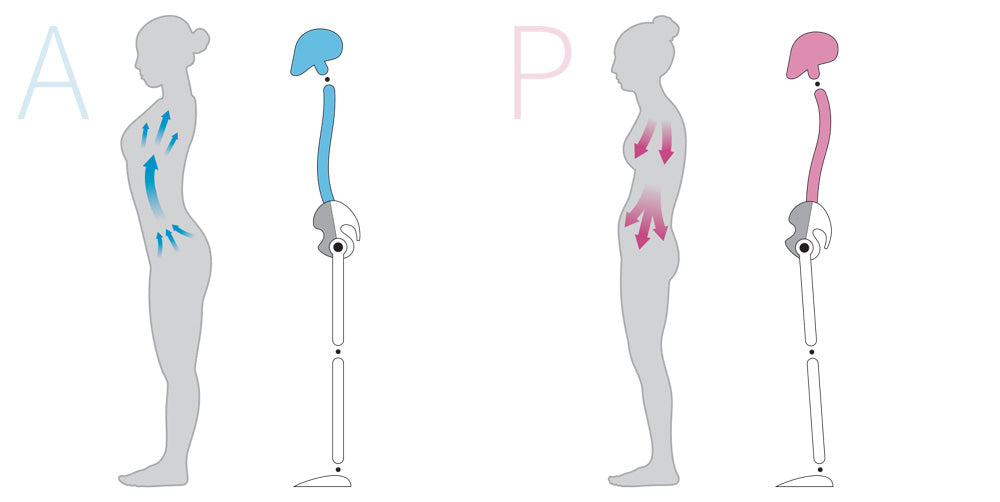Unbalanced posture affects your breathing pattern
This is an excerpt from Identifying Postural Imbalances Through Yoga- Revised Edition by Vayu Jung Doohwa.
Postural patterns affect breathing patterns, and vice versa. When the chest is open, both anterior pelvic tilt and lumbar curvature (secondary curvature) increase; this is called the inhalation pattern, as it is a postural pattern formed by a deep inhalation.
If you roll in the tailbone, both posterior pelvic tilt and thoracic curvature (primary curvature) increase; this is called the exhalation pattern, as it is a postural pattern formed by a deep exhalation.
The front line of Section 2 is lengthened during inhalation, while the back line of Section 2 is lengthened during exhalation.

A Type A, with a more prominent inhalation pattern, will likely have an unconsciously weak exhalation pattern. On the contrary, a Type P, with a more prominent exhalation pattern, will have weak inhalation patterns.

Generally, it is difficult for people to recognize their own posture objectively, because they usually only see the front part of their body when looking in the mirror. People can feel their posture through proprioceptors, such as the skin or vestibular system, which are spread all over the body. However, if the posture becomes a lifelong habit, which is hard to mend, it is challenging to feel it.
To quote Agatha Christie, “Curious things, habits. People themselves never knew they had them.” Even if people can recognize their postural patterns by looking in a mirror or at a video, or through the feedback from others, it is very difficult to receive “live” updates on their patterns during everyday life and make attempts to correct the imbalances.
Constantly adjusting posture and breath to form new habits is a complicated task to maintain. Although people will try poses that are more beneficial for their posture, it is not easy to consistently combine these poses with the corrective breathing rhythm, and often tension arises unconsciously.
For example, in the case of Type A, where the inhalation pattern of expanding the chest and raising the tailbone is fixed, as one exhales, one needs to combine the exhalation pattern consciously, where the tailbone is rolled in and the jaw is pulled down.

On the other hand, for Type P, where the exhalation pattern is dominant, one can aim toward neutral by emphasizing the opposite patterns, such as expanding the chest and raising the tailbone consciously during inhalation.

The conscious effort of bringing the postural inhalation pattern into the fixed exhalation pattern, as well as bringing the postural exhalation pattern into the fixed inhalation pattern, is a good start in achieving a balanced posture.
More Excerpts From Identifying Postural Imbalances Through Yoga- Revised EditionSHOP

Get the latest insights with regular newsletters, plus periodic product information and special insider offers.
JOIN NOW
Latest Posts
- Authenticity was key to McKinney’s NIL success
- AI—A new tool for sport PR pros
- Essential skills for sport PR practitioners
- Employ these tactics when pitching a story to the media
- How does ergonomic analysis and intervention enhance safety and reduce injury risk?
- Common movement patterns in competitive cycling


